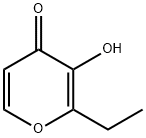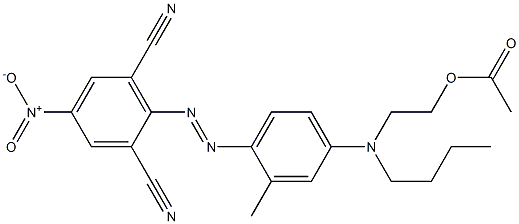2-Cyanoethyl ether
Synonym(s):2,2′-Dicyanodiethyl ether;3,3′-Oxydipropionitrile;Bis(2-cyanoethyl) ether
- CAS NO.:1656-48-0
- Empirical Formula: C6H8N2O
- Molecular Weight: 124.14
- MDL number: MFCD00001960
- EINECS: 216-750-9
- SAFETY DATA SHEET (SDS)
- Update Date: 2023-04-23 13:52:06

What is 2-Cyanoethyl ether ?
Chemical properties
clear colourless to very slightly brownish liquid
Safety Profile
Moderately toxic by ingestion. An eye irritant. When heated to decomposition it emits toxic fumes of NOx and CNí.
Properties of 2-Cyanoethyl ether
| Melting point: | -26 °C |
| Boiling point: | 110-112 °C/0.5 mmHg (lit.) |
| Density | 1.043 g/mL at 25 °C (lit.) |
| refractive index | n |
| Flash point: | >230 °F |
| Water Solubility | Soluble in water |
| form | clear liquid |
| color | Colorless liquid |
| BRN | 1746454 |
| CAS DataBase Reference | 1656-48-0(CAS DataBase Reference) |
| NIST Chemistry Reference | O(CH2CH2CN)2(1656-48-0) |
| EPA Substance Registry System | Propanenitrile, 3,3'-oxybis- (1656-48-0) |
Safety information for 2-Cyanoethyl ether
| Signal word | Warning |
| Pictogram(s) |
 Exclamation Mark Irritant GHS07 |
| GHS Hazard Statements |
H303:Acute toxicity,oral H313:Acute toxicity,dermal H319:Serious eye damage/eye irritation H320:Serious eye damage/eye irritation |
| Precautionary Statement Codes |
P264:Wash hands thoroughly after handling. P264:Wash skin thouroughly after handling. P305+P351+P338:IF IN EYES: Rinse cautiously with water for several minutes. Remove contact lenses, if present and easy to do. Continuerinsing. P337+P313:IF eye irritation persists: Get medical advice/attention. |
Computed Descriptors for 2-Cyanoethyl ether
New Products
4-AMINO-TETRAHYDRO-PYRAN-4-CARBOXYLIC ACID HCL 4-Aminotetrahydropyran-4-carbonitrile Hydrochloride (R)-3-Aminobutanenitrile Hydrochloride 3-((Dimethylamino)methyl)-5-methylhexan-2-one oxalate 1,4-Dioxa-8-azaspiro[4.5]decane 5-Bromo-2-nitropyridine 4-(Dimethylamino)tetrahydro-2H-pyran-4-carbonitrile Diclofenac Potassium Ornidazole IP Diclofenac Sodium IP/BP/EP/USP Mefenamic Acid IP/BP/EP/USP Aceclofenac IP/BP/EP Nimesulide BP SODIUM AAS SOLUTION ZINC AAS SOLUTION BUFFER SOLUTION PH 10.0(BORATE) GOOCH CRUCIBLE SINTERED AQUANIL 5 BERYLLIUM AAS SOLUTION Methylcobalamin (vitamin B12) SODIUM METHYL PARABEN SODIUM VALPROATE Racecadotril XANTHAN GUMRelated products of tetrahydrofuran








You may like
-
 3,3'-Oxydipropionitrile CAS 1656-48-0View Details
3,3'-Oxydipropionitrile CAS 1656-48-0View Details
1656-48-0 -
 3,3'-Oxydipropionitrile, 98% CAS 1656-48-0View Details
3,3'-Oxydipropionitrile, 98% CAS 1656-48-0View Details
1656-48-0 -
 2-Cyanoethyl ether CAS 1656-48-0View Details
2-Cyanoethyl ether CAS 1656-48-0View Details
1656-48-0 -
 89796-99-6 Aceclofenac IP/BP/EP 98%View Details
89796-99-6 Aceclofenac IP/BP/EP 98%View Details
89796-99-6 -
 61-68-7 98%View Details
61-68-7 98%View Details
61-68-7 -
 Diclofenac Sodium IP/BP/EP/USP 98%View Details
Diclofenac Sodium IP/BP/EP/USP 98%View Details
15307-79-6 -
 Ornidazole IP 16773-42-5 98%View Details
Ornidazole IP 16773-42-5 98%View Details
16773-42-5 -
 15307-81-0 98%View Details
15307-81-0 98%View Details
15307-81-0
Statement: All products displayed on this website are only used for non medical purposes such as industrial applications or scientific research, and cannot be used for clinical diagnosis or treatment of humans or animals. They are not medicinal or edible.